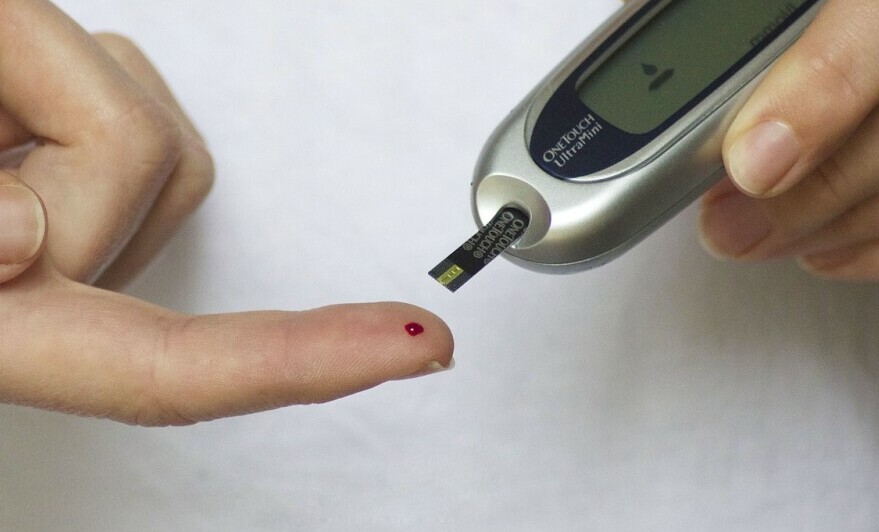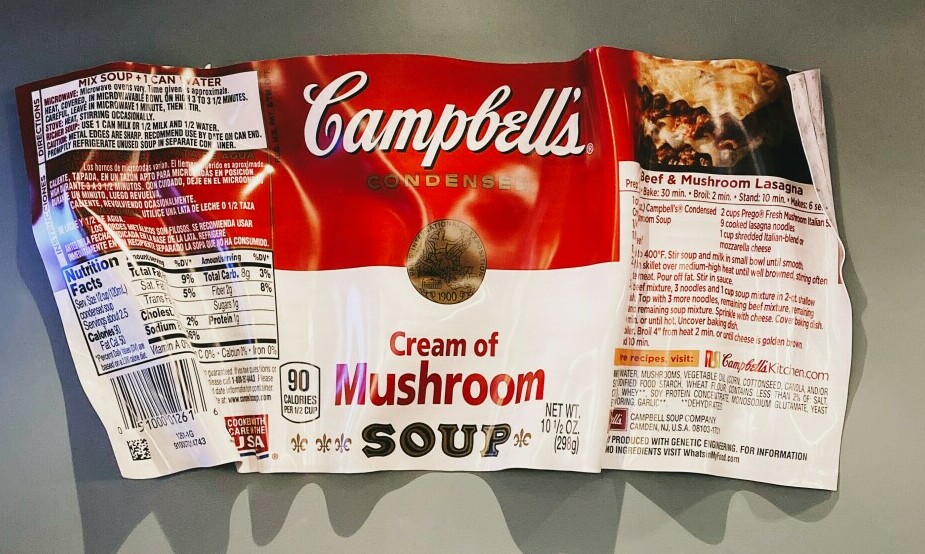Understanding and Managing Sugar Cravings
Identifying the triggers for sugar cravings
In today’s post, we’re going to look at ways to naturally curb sugar cravings. Sugar cravings are a common phenomenon that many people experience on a daily basis. These cravings can be triggered by a variety of factors, both physical and psychological.
One of the most common physical triggers for sugar cravings is blood sugar levels. When blood sugar levels drop the body craves a quick source of energy which often comes in the form of sugary foods. Certain hormones, such as insulin and leptin, can also play a role in triggering sugar cravings.
On the psychological side, stress, emotions and habits can all contribute to cravings for sugary foods. For example, many people turn to sugary snacks as a form of comfort when they are feeling stressed or anxious. Understanding and identifying these triggers for sugar cravings can be key in managing and reducing them. By addressing the underlying causes of these cravings, individuals can make healthier choices and improve their overall well-being.

The role of blood glucose levels in cravings and satiety
Blood glucose levels play a crucial role in regulating cravings and satiety. When blood sugar levels drop, the body signals the brain that it needs fuel, leading to cravings for quick sources of energy like sugary snacks or carbohydrates.
On the other hand, high blood sugar levels can also affect satiety by disrupting the body’s ability to properly regulate hunger hormones. This can lead to overeating and weight gain. It is important to maintain stable blood glucose levels through a balanced diet that includes complex carbohydrates, proteins, and healthy fats. Eating regular meals and snacks can help prevent blood sugar fluctuations and keep cravings at bay.
Incorporating fiber-rich foods can also help slow down the absorption of sugar into the bloodstream, promoting feelings of fullness and reducing the likelihood of overeating. Understanding the relationship between blood glucose levels, cravings, and satiety is a key for maintaining a healthy diet and weight.

Healthy alternatives to satisfy sweet tooth impulses
For those looking to satisfy their sweet tooth cravings in a healthier way, there are plenty of alternatives to traditional sugary treats. One option is to reach for fresh fruit, which is naturally sweet and packed with vitamins and fiber. Berries, such as strawberries, blueberries, and raspberries, are particularly good choices as they are low in calories and high in antioxidants.
Another option is to opt for dark chocolate, which contains less sugar than milk chocolate and is also rich in antioxidants. Incorporating natural sweeteners like honey, maple syrup or stevia into recipes can also help reduce the overall sugar content while still satisfying cravings.
For those who enjoy baking, using whole grain flours and reducing the amount of sugar in recipes can also help create healthier desserts. Finally, indulging in small portions of treats occasionally can help satisfy cravings without derailing a healthy diet. By making these simple swaps and choices, it is possible to enjoy sweet treats in a way that supports health and well-being.

Strategies to gradually reduce sugar intake
Excessive consumption of sugar has been linked to a variety of health issues, including obesity, diabetes and heart disease. One effective strategy to gradually reduce sugar intake is to start by identifying sources of added sugars in your diet. This includes sugary beverages, processed foods, and sweet treats. Once you have identified these sources, you can begin to make small changes to gradually decrease your intake. For example, you can start by swapping out sugary drinks for water or unsweetened tea, choosing whole fruits over sugary snacks and opting for plain yogurt instead of flavored varieties.
Another helpful strategy is to gradually reduce the amount of sugar you add to your food and beverages. This can be done by gradually decreasing the amount of sugar you use in recipes or in your morning coffee. Reading food labels can help you make more informed choices about the amount of sugar in packaged foods. By gradually reducing your sugar intake, you can improve your health and reduce your risk of developing chronic diseases.
Hydration and its importance in reducing sugar cravings
Hydration plays an important role in reducing sugar cravings and maintaining overall health. When the body is dehydrated, it can often mistake thirst for hunger, leading to increased cravings for sugary foods and drinks. By staying properly hydrated, you can help prevent these false signals and reduce the likelihood of reaching for unhealthy snacks.
Drinking water throughout the day can help keep your energy levels up and improve cognitive function, making it easier to resist the temptation of sugary treats. It is recommended to drink at least eight glasses of water a day, but individual needs may vary depending on factors such as age, weight and activity level. In addition to water, consuming hydrating foods such as fruits and vegetables can also contribute to your overall hydration levels. By making hydration a priority, you can better control your sugar cravings and support your body in achieving optimal health.

Mindful eating practices to combat impulsive snacking
Mindful eating practices can be a powerful tool in combating impulsive snacking habits. By being more present and aware of what, when and why we are eating, we can better understand our hunger cues and make more intentional choices about what we put into our bodies.
One key aspect of mindful eating is paying attention to our physical hunger and fullness cues, rather than eating out of boredom, stress or habit. This can help us differentiate between true hunger and emotional eating, which often leads to impulsive snacking. Additionally, practicing mindfulness while eating can help us savor and appreciate our food more, leading to greater satisfaction and reducing the urge to mindlessly reach for snacks.
Another important aspect of mindful eating is being aware of the sensory experience of eating, such as the taste, texture and aroma of our food. This can help us fully enjoy our meals and feel more satisfied, reducing the desire for unnecessary snacking. Incorporating mindful eating practices into our daily routine can help us break free from impulsive snacking habits and develop a healthier relationship with food.

The Sour Side of White, Refined Sugar
Overview of the processing of white, refined sugar
White, refined sugar is a common ingredient found in many processed foods and beverages. The processing of white sugar begins with the extraction of sugar cane or sugar beets, which are then washed and shredded to extract the juice. The juice is then filtered to remove any impurities before being heated to evaporate the water content.
The resulting thick syrup is further purified through a series of processes including carbonation, filtration and crystallization to remove any remaining impurities and produce white sugar crystals. These crystals are then dried and packaged for distribution. The entire process of refining white sugar involves multiple steps to ensure that the final product is pure and free of any contaminants. It is important to note that while white sugar is a common sweetener, it is important to consume it in moderation as excessive consumption can lead to various health issues such as obesity, diabetes and tooth decay.

Health risks associated with high consumption of refined sugars
High consumption of refined sugars has been linked to a variety of health risks. When consumed in excess, refined sugars can contribute to weight gain and obesity, as they are high in calories and can lead to an imbalance in energy intake.
A diet high in refined sugars has been associated with an increased risk of developing type 2 diabetes, as it can lead to insulin resistance and impaired glucose metabolism. Refined sugars can also have a negative impact on heart health, as they have been shown to raise levels of triglycerides and LDL cholesterol, which are risk factors for cardiovascular disease.
Furthermore, excessive consumption of refined sugars has been linked to an increased risk of developing non-alcoholic fatty liver disease, as the liver can become overwhelmed by the constant influx of sugar and convert it into fat. It is important to be mindful of the amount of refined sugars consumed in order to reduce the risk of developing these serious health conditions.

How refined sugar consumption relates to cravings
Refined sugar consumption has been linked to increased cravings for sweet foods and beverages. When we consume foods high in refined sugar, such as candy, soda and baked goods, our blood sugar levels spike rapidly, causing a surge of energy followed by a crash. This crash can leave us feeling tired, irritable and craving more sugar to boost our energy levels again.
Refined sugar can also disrupt the balance of hormones in our bodies, such as insulin and leptin, which regulate hunger and satiety. This imbalance can lead to increased cravings for unhealthy, sugary foods. Over time, repeated consumption of refined sugar can create a cycle of cravings and overeating, which can contribute to weight gain and other health issues.
To help reduce cravings for refined sugar, it is important to focus on consuming a balanced diet rich in whole foods, such as fruits, vegetables, whole grains and lean proteins. Additionally, incorporating regular physical activity into your routine can help stabilize blood sugar levels and reduce cravings for sugary foods.

Ways to identify hidden sugars in processed foods
Hidden sugars in processed foods can be difficult to detect, as they are often disguised under different names on ingredient lists. One way to identify hidden sugars is to look out for words ending in -ose, such as sucrose, fructose, and glucose. These are all forms of sugar that can contribute to the overall sugar content of a product.
Ingredients like high fructose corn syrup, maltose and dextrose are also indicators of added sugars. Another clue to watch out for is terms like syrup, juice concentrate and honey, which are all sources of added sugars.
It is important to be vigilant when reading labels, as even seemingly healthy foods like yogurt, granola bars and salad dressings can contain hidden sugars. By being aware of these common sources of hidden sugars, consumers can make more informed choices about their food purchases and ultimately reduce their sugar intake for better health.

Lifestyle diseases linked to excess refined sugar intake
Lifestyle diseases such as obesity, type 2 diabetes, heart disease, and certain types of cancer have been closely linked to excess refined sugar intake. Refined sugars, such as those found in sugary drinks, candies, pastries and processed foods, are quickly absorbed into the bloodstream, causing a rapid spike in blood sugar levels. This can lead to insulin resistance, a condition where the body’s cells become less responsive to the hormone insulin, which is responsible for regulating blood sugar levels. Over time, this can result in chronic high blood sugar levels, which can increase the risk of developing type 2 diabetes.
Excess sugar consumption has been shown to contribute to weight gain and obesity, as sugary foods are often high in calories and low in nutrients, leading to overconsumption. Furthermore, a diet high in refined sugars has been associated with inflammation, which can damage cells and tissues in the body, increasing the risk of developing heart disease and certain types of cancer. Therefore, reducing refined sugar intake and opting for whole, unprocessed foods can help lower the risk of developing these lifestyle diseases.
Educating oneself for healthier dietary choices
In today’s fast-paced world, it is becoming increasingly important to educate oneself on making healthier dietary choices. With the rise of convenience foods and busy schedules, many people are turning to quick and easy options that are often high in sugar, salt and unhealthy fats.
However, by taking the time to educate oneself on nutrition and the benefits of a balanced diet, individuals can make more informed decisions about what they eat. This can lead to improved health and well-being, as a diet rich in fruits, vegetables, whole grains and lean proteins can help prevent chronic diseases such as heart disease, diabetes and obesity.
By learning about the nutritional value of different foods and how they can impact our bodies, individuals can make choices that support their long-term health goals. Understanding the importance of portion control and mindful eating can help prevent overeating and promote a healthy relationship with food. In summary, educating oneself on healthier dietary choices is a powerful tool that can lead to a happier and healthier life.

I hope you have enjoyed this content. If you’d like to be notified as updates are made here at ’65 and Fabulous’ enter your name and best email in the form below.